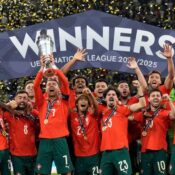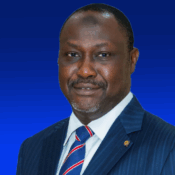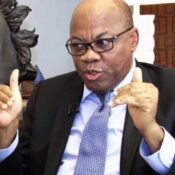
North Korea releases initial images of a location for restricted uranium enrichment
While visiting a uranium enrichment facility on Friday, North Korean leader Kim Jong Un demanded additional weapons-grade material to increase the arsenal and revealed for the first time photographs of the centrifuges that create fuel for the country’s nuclear bombs.
The initial images of the centrifuges, which offer a unique glimpse into North Korea’s nuclear program despite it being prohibited by numerous UN Security Council resolutions, were released alongside the official media report on Kim’s visit to the Nuclear Weapons Institute and a production base for weapon-grade nuclear materials.
In the pictures, Kim could be seen moving between extended rows of uranium-enriching metal centrifuges. Both the date of the visit and the location of the institution were unclear in the report.
In order to counter threats from the US and its allies, Kim said the nation needs to increase production of the materials needed to build up its tactical nuclear weapons arsenal.
According to him, the need for the weaponry is “self-defense and the capability for a preemptive attack.”
According to the article, North Korea’s Kim claimed that “anti-DPRK nuclear threats” from “U.S. imperialists-led vassal forces” had crossed the line.
Korea’s unification ministry declared that Pyongyang’s nuclear weapons will never be accepted and denounced the North Korean regime’s showcasing of its uranium enrichment facility.
There are reportedly multiple uranium enrichment plants in North Korea. Yongbyon Nuclear Scientific Research Center’s main building, which includes a uranium enrichment plant, has been seen to be expanding in recent years, according to analysts based on commercial satellite photography.
Nuclear element uranium is a naturally occurring substance. A substance with a higher concentration of the isotope uranium-235 is produced by processing raw uranium in order to produce nuclear fuel.
Rafael Grossi, the head of the International Atomic Energy Agency, stated on Monday that the reporting centrifuge enrichment facility at Yongbyon and the activities seen by the U.N. nuclear watchdog were compatible with a reactor being operated.
NEW CENTERFIGES
Expanding the use of a new type of centrifuge to strengthen the manufacturing of weapon-grade nuclear materials, as well as increasing the number of centrifuges to “exponentially increase” North Korea’s nuclear arsenal, were two of Kim’s main points.
According to Lee Sang-kyu, a nuclear engineering specialist at South Korea’s Korea Institute for Defense Analysis, the centrifuges in the images appear smaller and shorter than the models originally thought to be used by North Korea, indicating that country may have developed its own centrifuges to improve separation capabilities.
He continued by saying that the images also demonstrated that the North is producing highly enriched uranium by a cascade technique, which involves connecting a large number of centrifuges.
North Korea’s fuel cycle skills are improving, as demonstrated by this new type of centrifuge, according to Ankit Panda of the US-based Carnegie Endowment for International Peace.
“Kim also appears to suggest that North Korean tactical nuclear weapons designs may primarily rely on uranium for their cores,” added Kim.
This is significant because, according to Panda, North Korea can increase its stockpiles of highly enriched uranium more easily than it can with plutonium, which is a more complex process.
“ADVANCED ARSENALS”
While Jenny Town of the Stimson Center in the United States claims that Friday’s revelation is the first and only set of photos of the equipment, North Korea did invite a few foreign experts to visit a centrifuge facility at Yongbyon in 2010.
“It shows how advanced their enrichment capability has become, which gives greater credibility to both their ability and commitment to increasing their nuclear weapons arsenals,” she continued.
According to Hong Min, a senior scholar at the Korea Institute for National Unification in Seoul, it may also be an attempt to sway the outcome of the US election and give the next administration a message that denuclearization is impossible and that it must acknowledge North Korea as a nuclear power.
Russia’s Interfax news agency said that top security officer Sergei Shoigu met with Kim on Friday in North Korea and talked about both bilateral and international matters.
As military cooperation between the two governments grows, this meeting is the most recent high-level interchange between them. Analysts claim Pyongyang is still supplying Russia with weaponry, including brand-new ballistic missiles manufactured just last year.
According to a separate claim from KCNA, Kim oversaw the test launch on Thursday of a new 600mm multiple launch rocket system, which may have been done to test weapons intended for export to Russia, as previously stated by a South Korean official.
In addition to displaying images of what it claims to be nuclear bombs in the past, North Korea carried out six underground nuclear tests between 2006 and 2017.
There are several differing estimates regarding the quantity of nuclear weapons in North Korea. The nation may have created enough fissile material to assemble up to 90 nuclear weapons, but it is more likely to have assembled closer to 50, according to a July analysis by the Federation of American Scientists.
All Categories
Recent Posts
Tags
+13162306000
zoneyetu@yahoo.com



